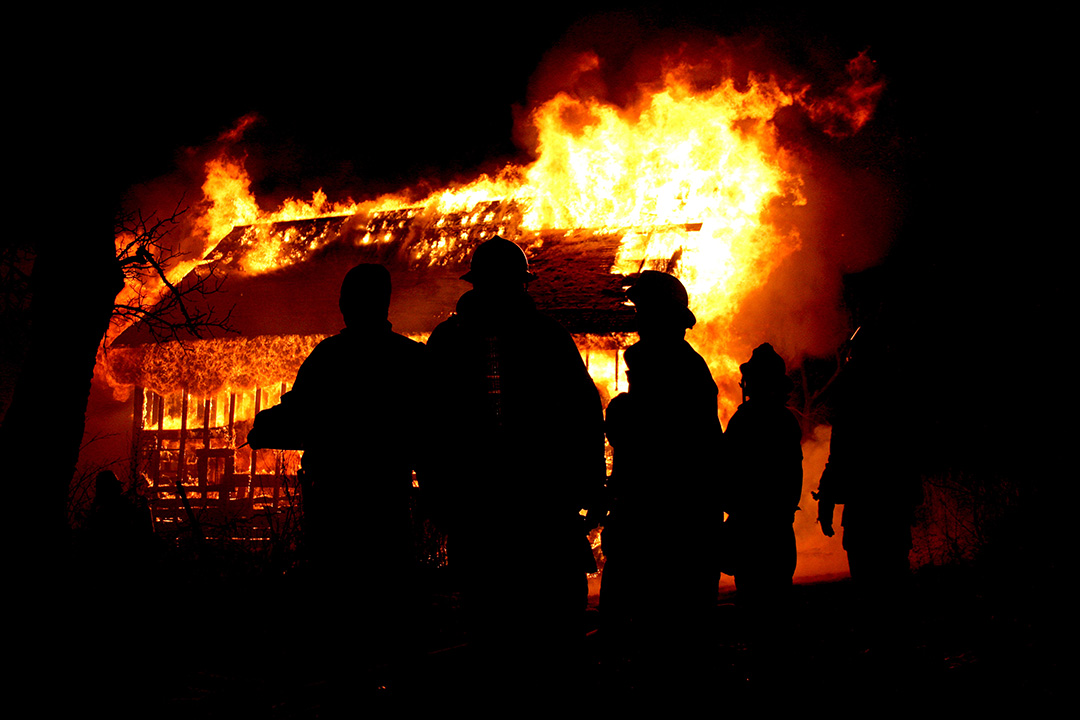
Preparing for the worst is the best plan for horse owners
No one wants a life-threatening disaster to occur at their barn or stable but very few horse owners make the time to develop a plan for preventing emergencies, says Dr. Rebecca (Gimenez) Husted, a primary emergency response instructor with expertise in large animal emergency rescue.
By Cat Zens“It's actually pretty amazing what people don't know about preventing problems with their animals,” says Husted. “If we spend more time on the prevention phase, we won't have to do as much [work] on the response phase.”
Husted is the founder of Technical Large Animal Emergency Rescue, Inc. (TLAER), a Georgia-based organization that provides guidance in emergency prevention and response. In October 2023, she was one of the featured speakers at the Saskatchewan Equine Expo, which took place in Saskatoon, Sask. All three of her presentations included invaluable tips on how horse owners can prioritize safety and disaster prevention in their facilities.
“I help people all over the world with these issues because it's important and we've got to get better at being able to do [emergency and disaster prevention planning] — not only to keep our horses safe, but to keep people safe … to keep emergency responders safe,” says Husted.
Maintaining a sense of resilience
During any disaster or emergency, Husted says it’s vital to maintain a sense of resilience – the power to withstand a challenging situation. To maintain resilience, equine facilities need to achieve two levels of emergency preparedness:
- personal preparedness involves individuals practising evacuating themselves, their families and their animals in emergencies
- business preparedness involves planning what businesses might need during emergencies – from veterinary care to planning with their local fire departments
Planning can mean different things to facilities located in different regions of the country. For instance, preparing for extreme cold, blizzards, tornadoes or grassfires is an asset on the Canadian Prairies while horse owners in other regions need to prepare for other natural disasters such as wildfires, flooding or hurricanes. Barn fires, which can happen anywhere due to electrical issues, lightning strikes or improperly stored flammable items, are one of the most crucial situations to plan for in an equine facility.
Husted recommends that stable owners develop a detailed emergency management plan for their facilities to assist in their personal and business preparedness. She emphasizes horse owners should meet with their local fire chief, emergency manager and animal control officer to ask questions about disaster planning and potential hazards that could affect their facilities.
Additionally, equine facility owners should talk with their insurers and confirm if their existing insurance covers fire damage, water damage, debris removal, structure replacement and loss of income.
Horse owners also need to understand the importance of preparing to evacuate their horses, including loading the animals into trailers and driving them to another facility or a veterinary clinic. Planning ahead allows people to think about critical questions, such as who will actually load the horses and who has proper training for hitching up and driving a trailer during adverse conditions.
Husted urges owners to train their horses in handling, horsemanship and trailer loading so they’re prepared to evacuate when needed. Failing to complete this training can mean the difference between safely transporting a horse to a safe location versus leaving an untrained animal behind to fend for itself.
“Our job [at TLAER] is not just teaching our clients’ horses to ‘slide and glide’ and all those things. It's also making sure that the horse is a good loader. Those are basic skills that make horses successful for the rest of their life. If you sell them and they have good skills, they will find a good home,” Husted says.
Adopting ‘best practices’
To ensure the safety of all horses and barn staff, what are some best practices for facilities to follow so they can ensure that disaster evacuations go well?
Husted recommends that stable and barn owners implement “no smoking” and “no alcohol” policies within 75 metres (250 feet) of the barn to prevent fires. As well, horses should be microchipped or tattooed for easy identification, up to date on their vaccinations, and trained to be caught, led and loaded onto trailers. Trailers and trucks should be regularly serviced in all seasons — ensuring that they’re ready to go during an emergency.
Facilities also need to ensure that people can communicate with each other: have strong internet access in the barn or stable and make sure to have alternatives – such as mobile radios – available in case internet or cell phone access fails. She also recommends setting up phone tree lists to communicate emergency plans with staff, clients, horse owners and families.
Beyond ensuring basic lines of communication, Husted encourages stable owners to arrange safety meetings with clients and staff to talk about preventing injuries, maintenance issues, animal handling and safety concerns. Based on these meetings, stable owners can make decisions to improve barn operations – from regular cleanings to upgrading equipment.
“Admitting that there are things that do go wrong is important,” Husted says.
When the time comes to evacuate, timing is everything. Animals need to be evacuated as soon as possible, so Husted says it’s crucial to have a pre-planned site that can take in evacuated animals. She also recommends that barns have exterior stall doors so it’s easier to evacuate stabled horses during emergencies.
Since natural disasters such as wildfires, flooding or tornadoes can have a major impact on whether your animals can be safely evacuated, Husted recommends that facilities set up mock evacuations throughout the year. Taking steps to prepare for a disaster — such as holding unannounced evacuation drills that include steps such as catching, loading and evacuating horses with three days' worth of food and medication — can significantly improve a barn’s disaster planning.
Questions? Please contact Husted through the TLAER’s Facebook group, by email (delphiacres@hotmail.com) or by text (214-679-3629).
